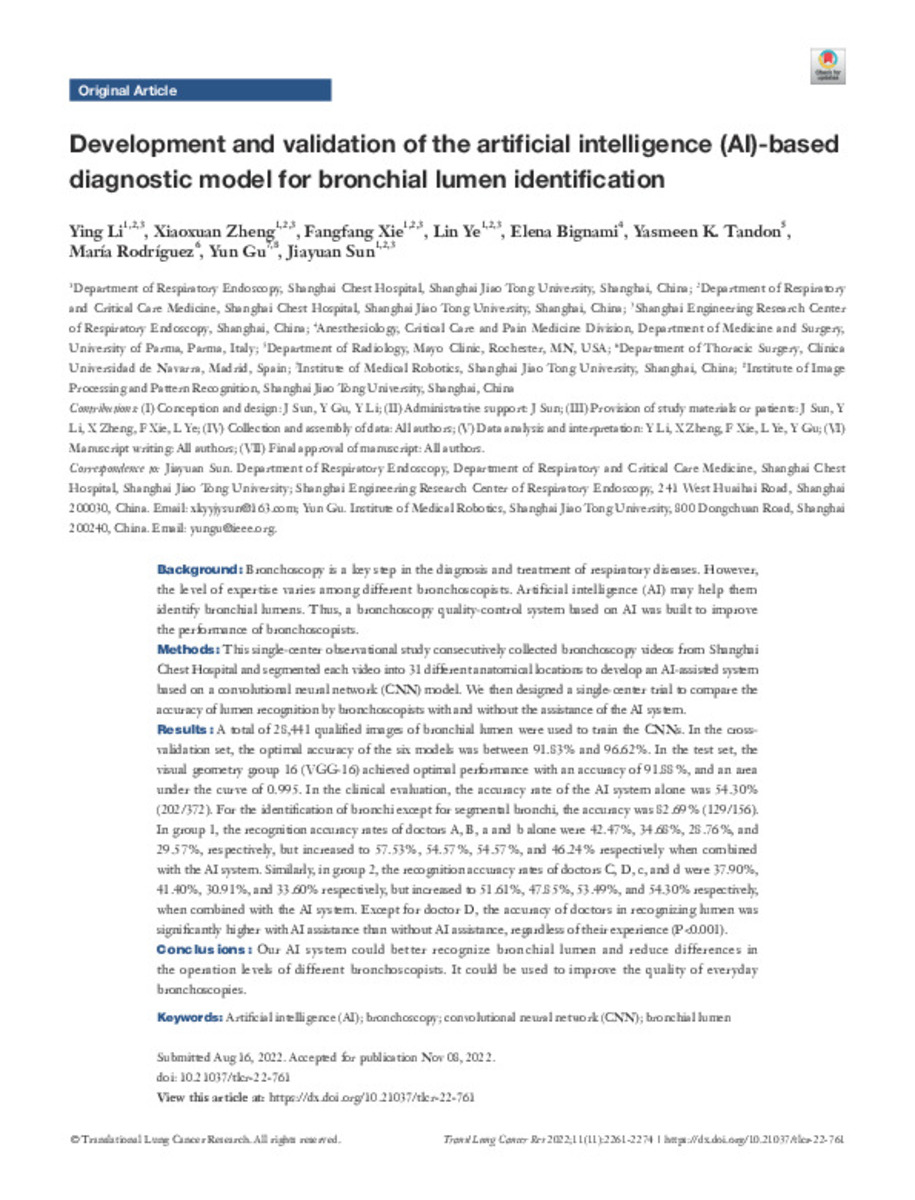Development and validation of the artificial intelligence (AI)-based diagnostic model for bronchial lumen identification
Keywords:
Bronchial lumen
Convolutional neural network (CNN)
Bronchoscopy
Artificial intelligence (AI)
Editorial note:
© Translational Lung Cancer Research. All rights reserved
Citation:
Rodríguez-Pérez, M.C. (María C.); Li, Y. (Ying); Zheng, X. (Xiaoxuan); et al. "Development and validation of the artificial intelligence (AI)-based diagnostic model for bronchial lumen identification". Transl Lung Cancer Res. 11 (11), 2022, 2261 - 2274
Statistics and impact
0 citas en

0 citas en

Items in Dadun are protected by copyright, with all rights reserved, unless otherwise indicated.







